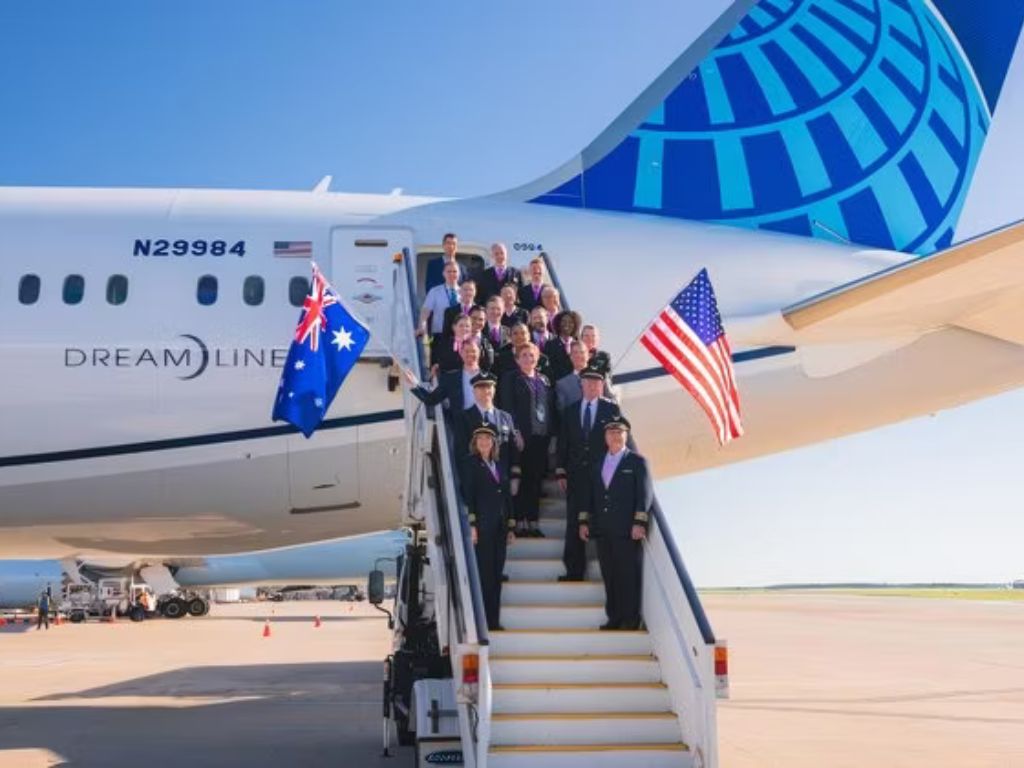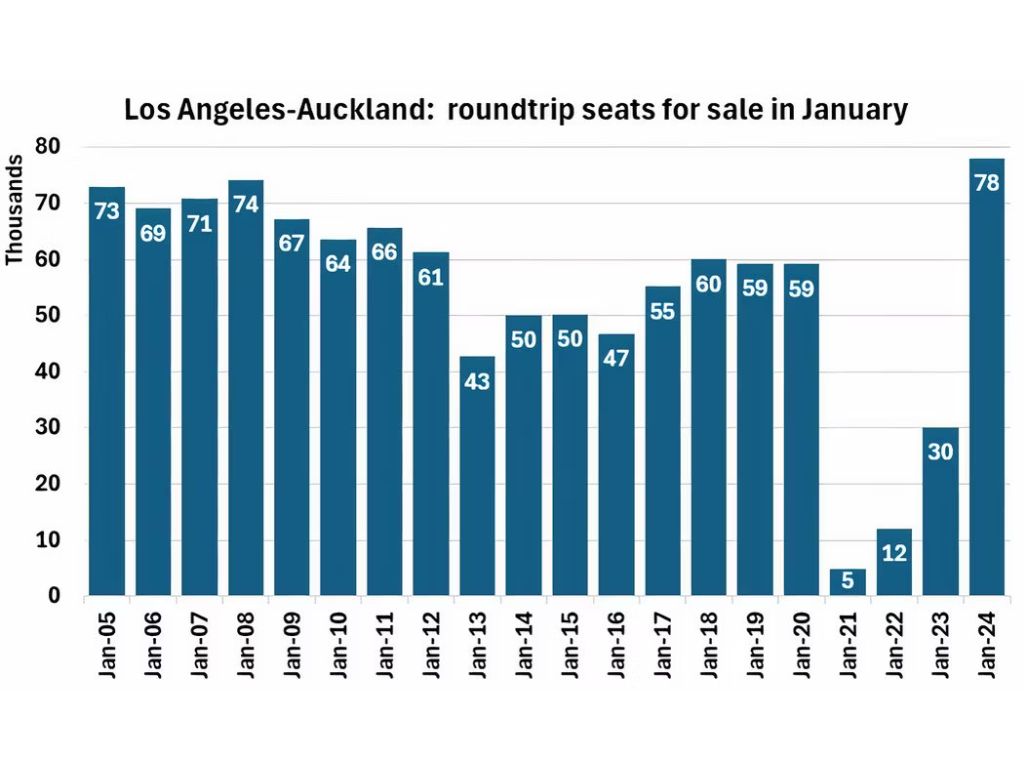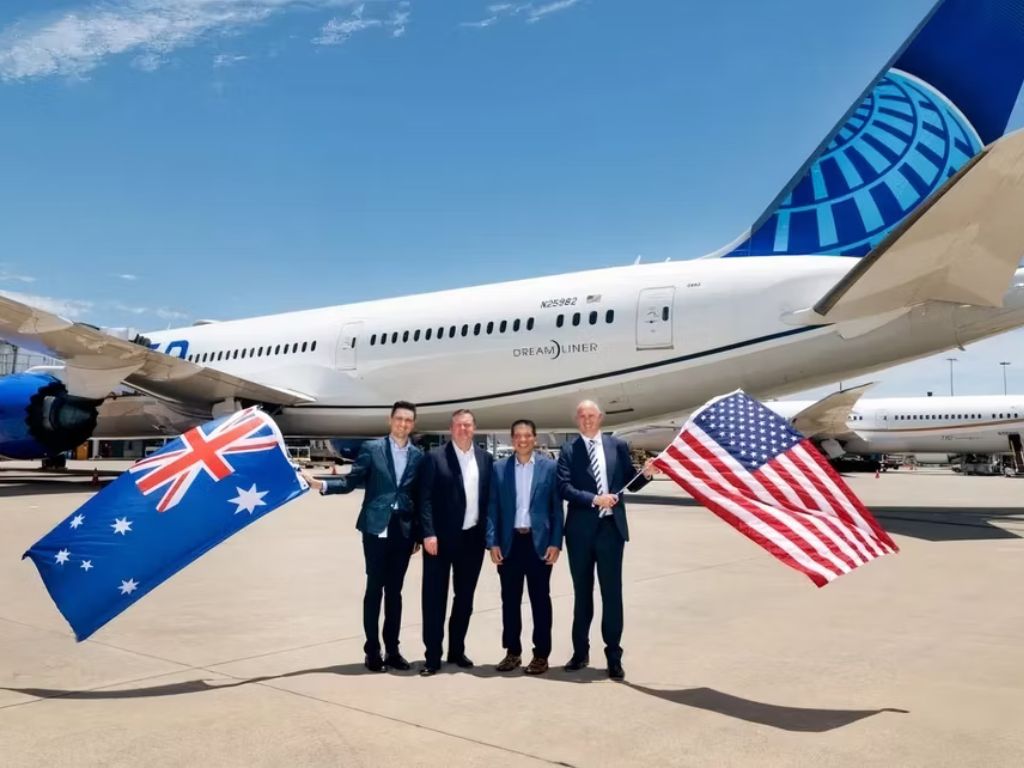Although both routes were new, each had poor load factors.
Despite only beginning Los Angeles to Brisbane and Auckland in late 2023, the peak summer Down Under, United has already ended them. The seasonal services will not return.
It begs the question of why they started in the first place. After all, United already flew to the two Australasian cities from its huge Asia-Pacific hub in San Francisco, and it has a transpacific joint venture with Air New Zealand, which has long served Auckland from Los Angeles and could cater to the market itself.
United ends Los Angeles to Brisbane
The Star Alliance member began Los Angeles-Brisbane on November 29, 2023. It operated three times weekly with the 257-seat Boeing 787-9 and ended on February 14, 2024. It was a particularly short-lived seasonal operation as the end had been brought forward. Evidently, the route had not performed to expectations relative to what else could be done with the allocated aircraft.
The 6,223 nautical mile (11,525 km) service was (theoretically) planned to return on December 4, 2024, but what was United’s 14th longest non-stop route has been removed. The airline probably never intended for it to come back.

Photo: Brisbane Airport
Qantas’ A330-200s will continue to serve the airport pair non-stop year-round. Australia’s flag carrier is unlikely to increase frequencies, and there is no indication whether it will upgauge aircraft. Assuming it does not, it should benefit from higher fares and yields following United’s exit. However, it’s not as straightforward as this: Delta begins the route in December. Will it do better than United?
According to US Department of Transportation T-100 data for December 2023 to February 2024, United’s non-stop flights carried just 8,548 roundtrip passengers between Los Angeles and Brisbane.
With 17,219 seats for sale, it barely filled half of its seats, even in the peak month of December. In February, the seat load factor (SLF) fell to just 39.6% – unthinkably poor. Yes, the route was brand-new, but it would have anticipated much better results. Imagine how bad things would be if United was against Qantas and Delta.
To compensate for the cut, United has increased San Francisco-Brisbane, which only started in October 2022, from the 257-seat 787-9 to the 350-seat 777-300ER for this coming northern winter. Operating daily, it will now have 1,302 additional weekly seats to Brisbane, 16% fewer than when it operated from Los Angeles. It could have been worse.
Los Angeles-Auckland has also gone
United began flying the 5,652 nautical miles (10,467 km) between the two cities on October 28, 2023. The four weekly 787-9 operation ended for the season on March 28, 2024. United was one of four airlines on it. Delta also entered the market in October 2023, while American returned in December, having last served it in 2020. Few other long-haul markets have seen such an explosion of operators so quickly.
The increased capacity was enormous. Cirium data for January 2024 shows that all airlines had about 78,000 roundtrip non-stop seats, about a third more than in the pre-pandemic January 2019. It was the highest volume in two decades – and possibly at any time. Unsurprisingly, such development in so little time, especially coming out of coronavirus, had a clear negative impact on fares, yields, and performance.

Source: Cirium. Figure: James Pearson
US T-100 data shows that United carried 19,473 passengers on Los Angeles-Auckland-Los Angeles between December and February and filled 60% of seats. It was new but remember: it was the peak season Down Under.
It makes more sense for United to cut its losses, consolidate in San Francisco (Auckland and Brisbane are served), and leave Los Angeles-Auckland for joint venture partner Air New Zealand.
Source: Simple Flying

Warning: Illegal string offset 'cookies' in /home/u623323914/domains/eng.bayviet.com.vn/public_html/wp-includes/comment-template.php on line 2564